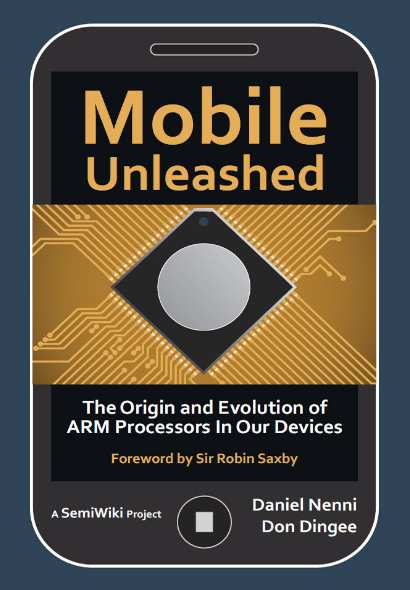 After having taken a closer look at x86 processor with “Inside The Machine” I came across “Mobile Unleashed“, a book about the history of a non-Silicon Valley company and technology for a change that has significantly shaped the world of computing as we know it today: ARM.
After having taken a closer look at x86 processor with “Inside The Machine” I came across “Mobile Unleashed“, a book about the history of a non-Silicon Valley company and technology for a change that has significantly shaped the world of computing as we know it today: ARM.
Written by Daniel Nenni and Don Dingee the book tells the story of the ARM microprocessor that powers pretty much everything these days that has a CPU inside except your PC at home and data centers which are (still) mostly dominated by the Intel x86 architecture.
Before reading the book I was vaguely aware that the ARM processor was initially designed by a company called Acorn in the UK as a processor for their BBC Micro successors, the Acorn Archimedes line of computers. That was back in the 1980s and the Archimedes was in direct competition with the Amiga, the Atari and the PC. But apart from that I knew little what happened between then and ARM having become the dominant embedded CPU architecture today that is not only used in smartphones but in pretty much everything else ‘non-PC’.
The authors do a wonderful job of filling my gaps and telling the story of Acorn and ARM at the beginning, how Apple became involved as ARM’s first customer and share owner when they needed a powerful but power efficient and embeddable processor for their Newton PDA and how the ARM architecture spread quickly from then on. They then go on to tell the story of how, unlike Intel who always wanted to be in control themselves about their processor and its production, ARM’s philosophy was different from the start. Their approach was and is to license their design and instruction set and let other companies build their own hardware around it or even design their own processor based on the ARM instruction set to adapt it to their needs and to build their own hardware around it.
In the second half of the book, the authors take a look at three major companies who are using ARM technology in the past and today: Apple with its A7, A8, etc. smartphone and tablet processors, Qualcomm with their platforms for wireless and Samsung with their Exynos chips for their Galaxy branded smartphone flagships. Apart from a great history lesson a major takeaway for me is that while most companies take the processor as designed by ARM, the companies mentioned above go one step further and design their own processor based on the ARM instruction set. Qualcomm is an interesting company in that regard as some of their chips use original ARM processor designs while others use their self designed ARM processor cores, something that would be impossible to do with Intel.
Overall, the book does not only cover the evolution of ARM from the beginning of the 1980s to today but also the history of Samsung, Apple and Qualcomm when it comes to their use of ARM. For Samsung and especially for Qualcomm, the book goes a step further and also contains a short general history of the company. For me it was especially interesting to learn about how Qualcomm came up with their 2G CDMA solution at the end of the 1980’s and positioned it as an alternative to D-AMPS and GSM. What a difference compared to the process in which nation states and state owned telephone monopolies in Europe agreed to come up with a single digital mobile communication system in the 1980’s. A miracle GSM succeeded in the massive way it did despite so many people, companies and nations who wanted to have a say.
In summary, if you want to learn more about the British computing industry in the 1980’s, about ARM, some history about Apple, Samsung and Qualcomm and get a perspective on the mobile industry with a ‘silicon angle’, then “Mobile Unleashed” is the book to read!
Hi Martin, if you found the Qualcomm part interesting you will love this book..
The Qualcomm Equation: How a Fledgling Telecom Company Forged a New Path to Big Profits and Market Dominance
Hi Mark, interesting, thanks for the tip!